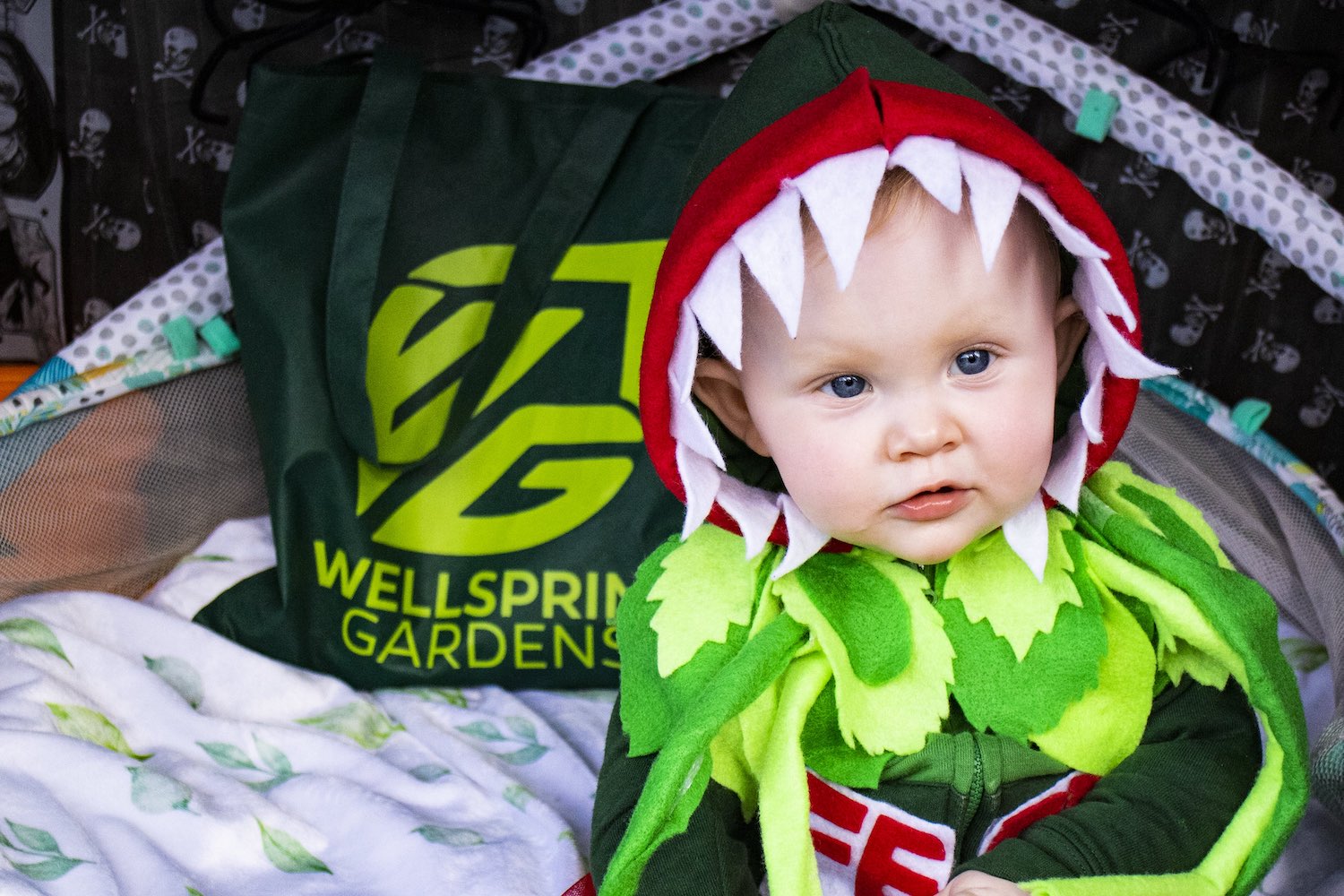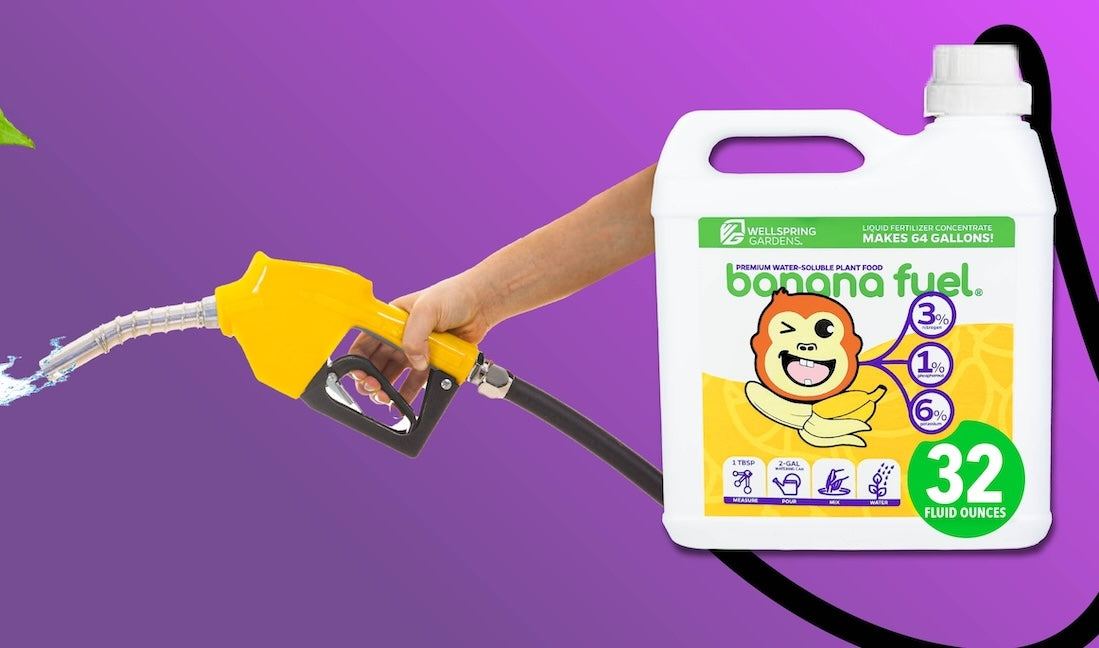Growing Alocasias
Alocasias are one of three main types of Elephant Ears; they are characterized by their pointy, 🏹 arrow-shaped leaves, many species of which point upward. We love watching Alocasias grow up because their distinctive traits become more prominent as they mature. For example, an Alocasia may start with smooth leaves that become serrated or stout leaves that become elongated (depending on the variety of course). Another thing we love about Alocasias is how prolifically the leaves grow. (Check out our time-lapse below—It's pretty cool.) But what we love most is that Alocasias are so diverse with species that range from massive landscape plants to species that grow compactly enough to keep as houseplants. Read on to learn how to care for your new baby Alocasia.
Alocasia Care
- Light: Part sun to shade (Green-leafed varieties prefer bright light.)
- Soil: Well-drained
- Water: Regular but light. Allow to dry out somewhat between waterings.
- Fertilizer: 20-10-20
- Zone: 6-8 annual / 9-11 perennial
- Goes dormant? Yes
- Winter care: Water 2-3 times per week and protect from extreme temperatures
- Common pests: Aphids, thrips, mealybugs, and mites
- Toxic to pets? Yes
Light
Alocasias generally like part sun to shade, which is one aspect that makes them ideal for growing indoors or outdoors. If planted in part sun, they typically grow more compact and brightly colored. In shade, Alocasias often reach their largest size.
Soil
Alocasias prefer well-drained soil so they can dry out somewhat between waterings. Alocasias can be susceptible to root rot if they are constantly given water without a little time to dry out.
Water
Alocasias need light but regular watering. This is another aspect that makes them ideal houseplants because they don't require heavy hydration.
Fertilizer
All fertilizers contain three primary nutrients: (Nitrogen (N), Phosphorus (P), and potassium (K). Alocasias generally thrive with a ratio of 20 Nitrogen (N), 10 phosphate (P2O5), and 20 potash (K2O) along with other micronutrients. We’ve got you covered with our Elephant Ear Fuel, which contains that exact ratio.
Elephant Ears are heavy feeders, meaning they really thrive when given the nutrients they need. We recommend fertilizing every 7-14 days in the growing season (spring/summer). Once the cooler temperatures of fall and winter hit, you can take a break from fertilizing as your plant goes dormant.
Zone
Most Alocasias thrive in zones 9-11. What exactly is a plant zone? The U.S. Department of Agriculture created a resource to help gardeners identify the areas in which plants tend to grow well. The resource is a map of the U.S. divided into zones based on the coldest temperatures for the area. How does that help you? Let’s say you live in Ft. Lauderdale, Florida which is zone 10. If you look at the map you will see that the coldest temperature is typically 30 degrees Fahrenheit. If you buy a plant listed within zone 10, you generally won’t have to do anything to protect it in the winter because it can take temperatures down to 30 degrees. But if you live in Gainesville, Florida (zone 9a), where temperatures sometimes dip down to 20 degrees Fahrenheit, the plant will need a little help from you to stay warm.
Knowing the USDA hardiness zone helps green thumbs like yourself strategize on the best plants to grow in your area. But the good news is that if a plant is outside your zone, all you need to do is provide a little winter protection or grow indoors and your plant will be happy and healthy even though it's outside its normal growing zone.
So as you’re shopping, you may want to Google "your city + USDA hardiness zone” to see what your zone is. If you live outside your desired plant’s zone, plan to grow in a container so you can bring it in during temperature extremes or grow it indoors. All of our product pages include the plant’s zone so you can make an informed decision.
Goes Dormant
Fall sweater weather, the scent of cinnamon brooms, and the flavor of pumpkin spice emanating from the kitchen all signal the beautiful autumn leaves 🍁 we all love turning from green to a crispy orange and yellow; we know that although the leaves have fallen, the trees are still alive and well; they’re just hibernating (in plant terms, going dormant) until the spring season brings a wellspring of new life. Regardless of your zone, once temperatures dip below 40 degrees Fahrenheit or so, expect your Alocasia to stop growing for the season and shed its current growth down to the soil level, meaning you may not be able to see anything, but know that deep down, the corm is happy, healthy, and keeping warm underground. Dormancy (plant lingo for a state similar to hibernation) is an important part of the growing cycle when plants focus on strengthening their root systems instead of creating new growth. They are still healthy, viable plants that will begin growing new leaves in spring when there is more light and warmer temperatures during the day and night.
Winter Care
Compare your city’s USDA plant hardiness zone with the plant’s to see how much cold your Alocasia can endure 🥶. If you live outside the zone your plant is listed for, you’ll want to help it keep warm. Here are a few ways to get your Alocasia through those chilly temps:
- Mulch well and cover.
- Plant in a pot so you can bring indoors or on an enclosed patio right next to the house.
- Dig up the corms and keep them inside your home or garage.
Your Alocasia won't need as much water while it's dormant because it won't have any or much top growth to support. Water lightly 2-3 times per week, allowing it to dry out somewhat between waterings. This will help the underground corm stay alive and kicking.
You may have success with grow lights, but you may want to let your Alocasia go dormant instead of keeping it from going dormant artificially. They will come out better and stronger in the end if they are allowed to continue their natural cycle.
Common Pests
Aphids, thrips, mealybugs, and mites are all potential Alocasia pests. What should you do if you see one? Temporarily put your Alocasia outside away from your other plants and then take a cotton swab with a little horticultural soap and/or neem oil—a safe and organic oil that helps combat pests—and touch each insect with it; this will help remove it and will kill the bug as well. If you don't have any neem oil on hand, you can even use a little vegetable oil mixed with water. Once you know the bugs are all gone, it’s safe to bring it back together with your other plants.
Toxic to Pets
If you have a pet dog or cat, be aware that ingesting part of an Elephant Ear plant can be toxic, causing excess saliva, vomiting, difficulty swallowing, etc.
Troubleshooting
Oh, no! My Elephant Ear Lost a Leaf!
Damaged leaves? 🍂 Don’t fret. It's really common for elephant ears to shed leaves, especially after being in a dark box. That's why many online sellers send them as corms (plant lingo for a bulb-like root) with no leaves. Because we know it's more satisfying to receive an actual plant, we aim to send ours with leaves. However, as noted on the flyer included in your package, on occasion a leaf is damaged during shipping or some leaves die, but the underground rhizome is still alive and healthy and will grow new leaves relatively quickly. If you haven't already, repot and trim off any damaged or dead leaves a few inches from the base. You can even fertilize it. The leaves will quickly re-grow from the tubers. And you won’t even have to wait for the plant to mature. Even starter-size plants will produce new leaves. Check out our time-lapse to see just how quickly Elephant Ears can grow a new leaf; although timing can vary depending on the individual plant and the season, it will give you an idea of how these amazing plants grow.
My Alocasia Doesn't Look Like the Picture
Just like babies, Alocasias change drastically over time; They start showcasing their unique attributes like serrated edges, elongated leaves, etc. more prominently as they are mature. If your Elephant Ear doesn’t look as you thought it would, just give it a little time to mature and before you know it, your baby will be all grown up and will exhibit its unique characteristics.
How Should I Care for My Alocasia After It Arrives?
Please give your Alocasia a little TLC after its journey through the mail 📬. Here are a few steps we recommend:
- Unwrap immediately to provide fresh air to the plant and soil.
- Wait a few days before exposing to full sunlight so your plant can adjust after being in a dark box for several days.
- Always protect from heat and cold because temperature extremes can be stressful or deadly for plants.
- Water. Your baby plant may be parched and even a little wilted but thorough hydration will help it recover.
- Grow out in a larger pot to increase your chances of success—i.e., a quarter gallon—Then transplant to the ground or the next pot size up once the roots fill to the bottom. This will help the plant get sufficient water and nutrients directly to the roots.
What Size Pot Should I Use?
We recommend growing your baby Alocasia out in a🪴larger pot to increase your chances of success 🏆. Wondering how repotting can make your plant grow more successfully? Repotting helps focus the water and nutrients directly towards the roots. If the pot is too large or if your baby is planted in the ground, the water and nutrients have more room to spread to the wrong places where they aren’t needed. This can be extra detrimental to a baby plant that needs all the support it can get as it is preparing to grow up.
Choosing the correct pot size for your baby Alocasia can be tricky because it’s not a science and differing opinions abound, but we hope you find the following guidelines helpful:
- Choose a pot that is 1-2 inches in diameter greater than your plant currently is.
- Transplant to the ground or the next pot size up once the roots fill to the bottom.
- Be sure to size up gradually instead of starting with your final pot size.
If you’re planning ahead to see what the ultimate pot size will be once your plant reaches full maturity, one rule of thumb is to plan a half gallon per foot of height. For example, if you’re growing an Alocasia that can grow up to 10 feet, plan for a 5-gallon pot eventually.
We encourage you to do some further research to find what will work best for your specific plant, goals, and space.
Shop Elephant Ears
Shop for Elephant Ears at Wellspring Gardens.






